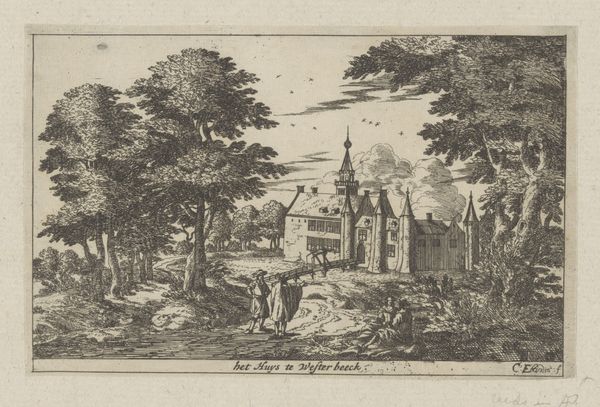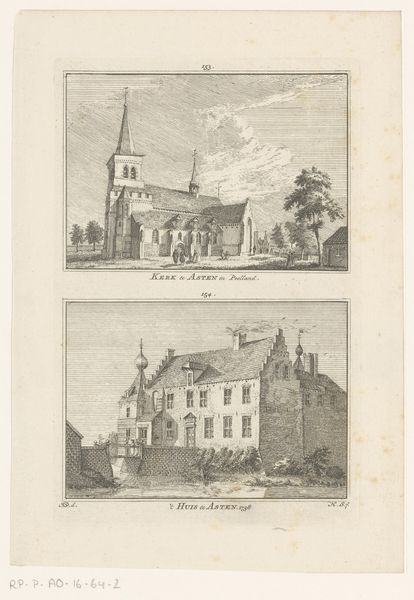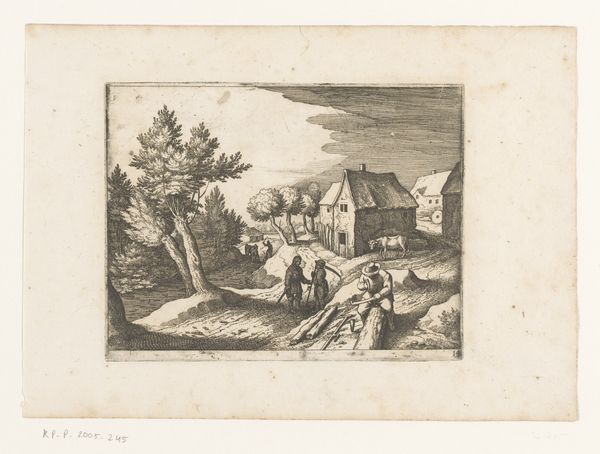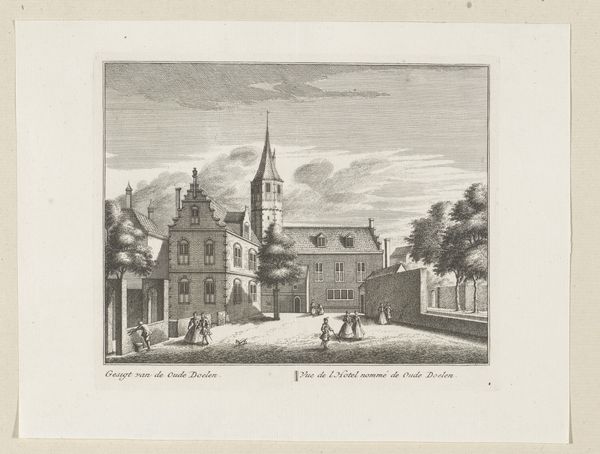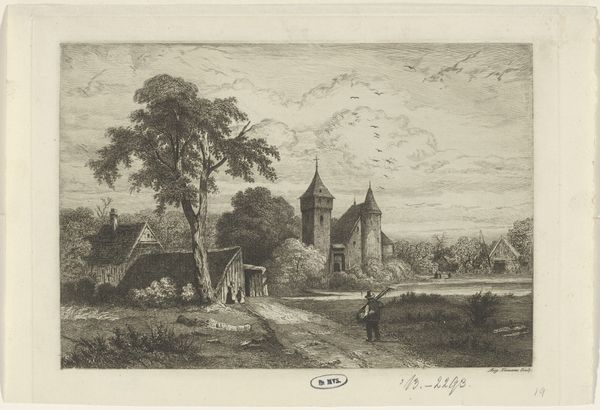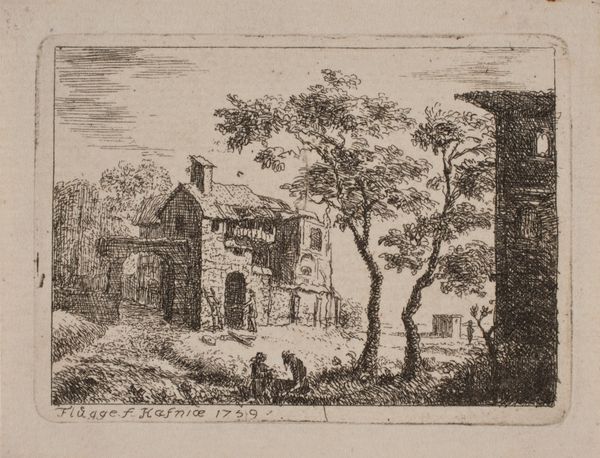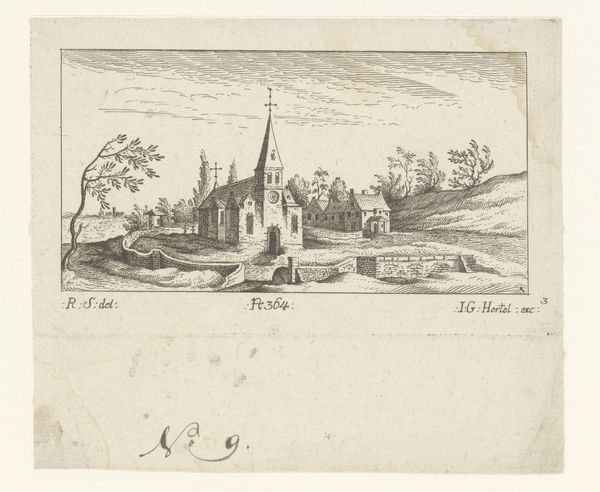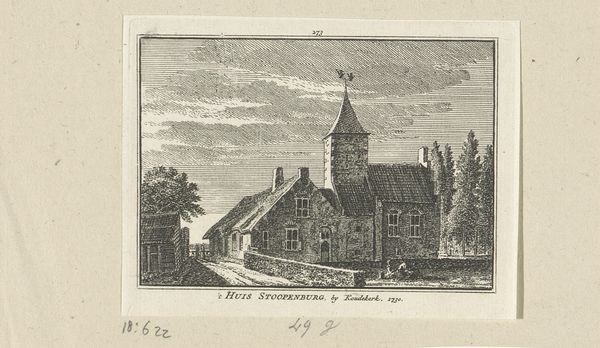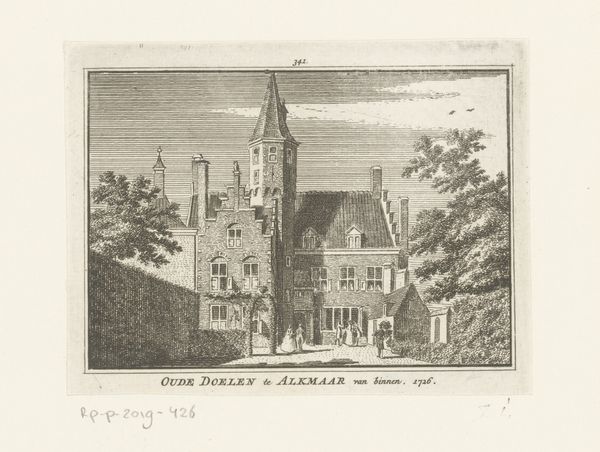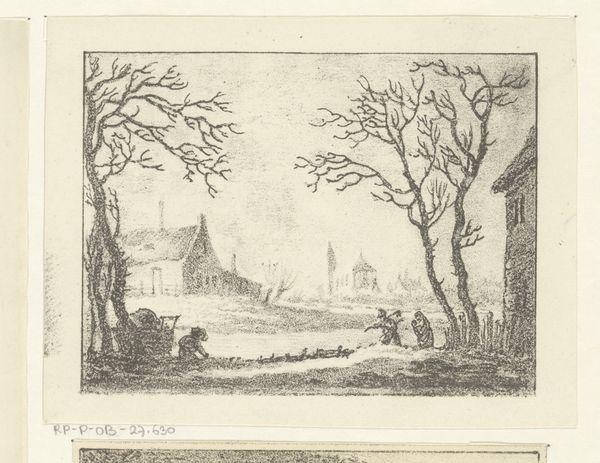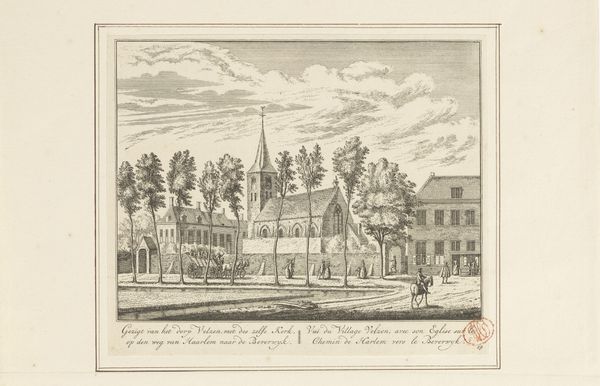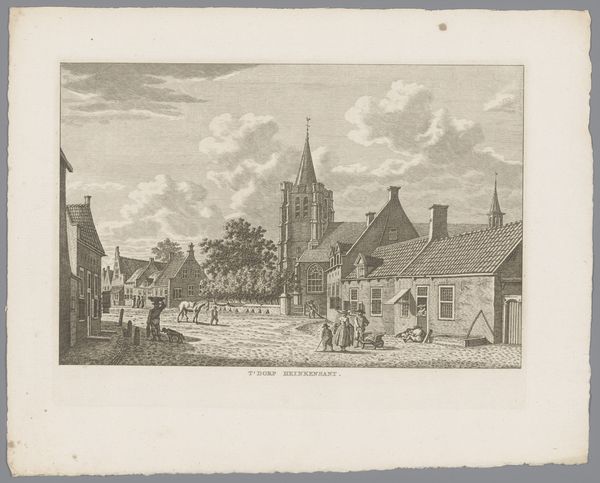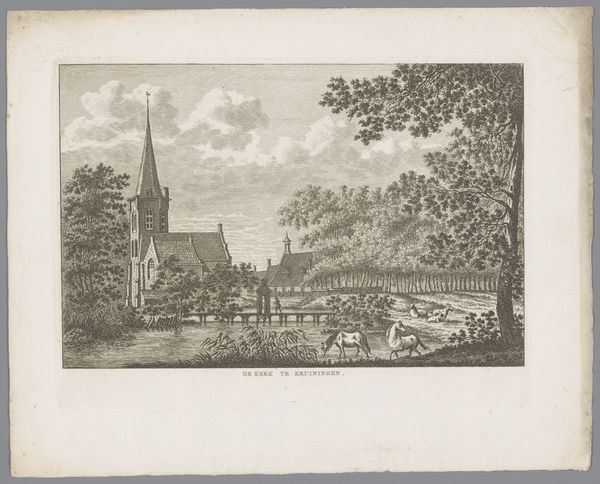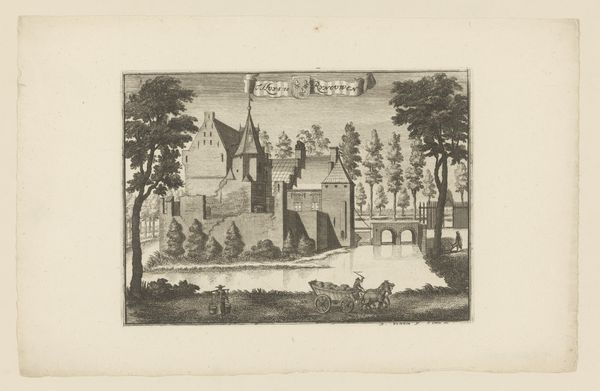
print, engraving
# print
#
landscape
#
genre-painting
#
engraving
Dimensions: height 142 mm, width 81 mm
Copyright: Rijks Museum: Open Domain
Curator: What a deceptively quaint scene! This engraving, "De aarden en de ijzeren pot," or "The Earthen and the Iron Pot," was created in 1758 by Johann Heinrich Meil the Elder. The landscape and subtle details initially suggest a peaceful village scene, don't you think? Editor: It does seem rather tranquil at first glance, with the church steeple in the background. But there's a clear sense of vulnerability emanating from the two pots clashing in the front. Given the era, I can’t help but interpret them as a commentary on class conflict. Curator: Precisely. The materiality is key. Think about the power dynamics inherent in an iron pot versus one made of earthenware in 18th-century society. Iron, representing the ruling class, could easily crush the earth—the working class. Editor: Absolutely, and it speaks volumes about the uneven playing field of that period. It subtly suggests an imminent disaster; not an outright declaration of class war but perhaps a prescient caution around power. The precarious positioning, as they struggle along a rustic road near a house of worship— it all feels deliberate. Curator: Indeed. The inclusion of the church raises questions of moral authority and societal complicity. Are institutions supporting or mitigating the plight of the earthen pot, the vulnerable ones in our world? And look at the seemingly undisturbed village in the background – does it represent a blind indifference? Editor: These questions of moral indifference are extremely salient! Even the idyllic-looking landscape, complete with a tree shading the country road, does little to soften the overall narrative. The natural order provides cover, even endorsement, for inequity and unchecked dominance. Curator: Examining Meil's "The Earthen and the Iron Pot", one begins to see the piece transcends a mere depiction of rural life. It delivers a visual narrative rife with social commentary. Editor: Yes. This engraving, though delicate in its execution, carries a powerful message about power, class, and the looming threat faced by the vulnerable. The visual vocabulary used by Meil ensures its relevance across different epochs.
Comments
No comments
Be the first to comment and join the conversation on the ultimate creative platform.
